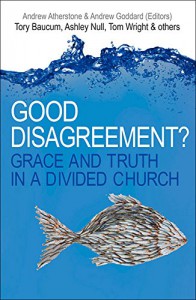Review: Bring ‘Em Back Alive – A Healing Plan for Those Wounded by the Church
 Reading this in my current quest to explore the connection between trauma and church culture, I have found a book that is well-intentioned but fundamentally flawed.
Reading this in my current quest to explore the connection between trauma and church culture, I have found a book that is well-intentioned but fundamentally flawed.
Dave Burchett’s Bring ‘Em Back Alive gets a lot right. He is honest about how church can and has been a painful experience for many. He has a pastoral heart that yearns for the church to reach out to those so wounded. There is some helpful advice for those who care and some useful insights for those who have been hurt. But this book is far from the “healing plan” it is touted to be.
A defining image (page 13) in the book is of the “lost sheep”, the one who has wandered, as opposed to the 99 who remain in the fold. He exhorts us to have the heart of the Good Shepherd who seeks out that one lost sheep. The image draws on Jesus’ words in Matthew 18, of course, but it’s a somewhat tortured connection with the parable. Not only does Burchett avoid a nuanced exposition, he misses the plain correlation between the lost sheep and the “little child” of Matthew 18:5 who “enters the kingdom of heaven.” His use of The Message as his biblical text throughout severely restricts the depths from which he can draw.
It’s a shame, because Matthew 18 can really help us in this area. The wandering sheep is a “little” one, who exhibits a childlike faith. Jesus has just talked about the consequences for those who would cause such a “little one” to stumble, or sin, or wander. The dramatic image of a “millstone hung around the neck” and being drowned in the sea should give us pause for thought! It is a prophetic parable against those “who look down on one of these little ones” and has more implications for the character of the flock, than that of the little lamb.
And here lies Burchett’s problem. As he rightly appeals to church leaders to value those who have wandered away, he misses this prophetic trajectory against the existing flock, and therefore embraces some worrisome assumptions. I’ve tried to bluntly distill them here:
- The point of reaching out to the wounded is to bolster the strength of the church. “How much depth have we, the collective church, lost by not aggressively seeking to find and heal our wounded lambs?” he asks on page 2, in the introduction. Somehow the utilitarian power of the wounding community has become the point.
- The problem lies with those who have left. “So many people out there have been given up for lost,” he writes. “They could be found, healed, and returned. If we could only begin to communicate that we are willing to accompany them on the road back, forgive them, love them, and celebrate their return” (page 18). Frankly, this sentence made me angry. The subtitle of the book aims it at “those wounded by the church”, yet here it is the wounded ones that need to be “found”, “returned”, and “forgiven.” This is close to the language of an abusive husband, offering “reconciliation” because he is gracious enough to forgive his wounded wife.
- People leave because of their immaturity. “Like a thirsty sheep, a bored and unfulfilled Christian who is without spiritual shepherding may wander onto paths that lead away from God.” (Page 36). Which is fine to say, perhaps, if this is a book about being better shepherds. But it’s not, and it infantilises those who have left and diminishes the principles (some of them dearly held) that shape that departure.
- Unity trumps holiness and justice. “The Good Shepherd has a cure for us, and it starts with His prescription for unity.” (Page 48). “Division within the body of Christ is sin. Jesus’s teaching about unity is indissoluble.” (Page 56). His words, in themselves, are not wrong. They are simply not careful enough. Again, he inadvertently echoes the words of an abusive husband insisting that marital unity is more important than any particular transgression on his part. Sometimes separation is necessary for unity. Even Paul (quoted by Burchett on page 53) exhorts Titus to have “nothing to do with” the (truly) divisive person. I know too many people who have appropriately departed their church community, and have then be shamed as divisive or schismatic, when the real wound to the body of Christ was done to them, not by them.
I’ve deliberately painted a stark image here, to make my point. Despite the flaws, Burchett does get to some helpful places.
The chapter entitled The Heart of a Shepherd is generally good. Occasionally he has the same sentiments as people like Mike Pilavachi who reimagines church as family. “Peter did not advise the shepherd to show difficult rams and ewes the sheep gate”, Burchett writes (page 76), and I hear Pilavachi echoing “We don’t have employees to hire and fire, but sons and daughters to raise.” Burchett’s one clear point is well made: We have a responsibility to the wounded(page 78), and we should take it seriously.
The second part of the book is also useful. It is actually aimed at those who have been hurt, rather than those who might seek them out. It’s nothing groundbreaking, but it is good, solid, stuff. He would turn our wounded eyes towards Jesus who “understands the pain, betrayal, and anguish that… selfish and sinful behavior causes” (page 117). He exhorts us towards forgiveness (page 180). He gives guidance about living in the present (page 153).
Occasionally, the era of the book shows. Published in 2004, it is just before the heyday of the emerging and emergent church movements. As he scratches on the disaffection of those in church who are “tired of pretending their lives are better than they actually are” (page 90), he has not yet seen the growth of movements that did arise from those who left that plastic world. Perhaps there is a glimpse of some generational wistfulness: “…they need to hear from their former flock that we care, we miss them, we need them, and we want them to come back” (Page 91). Having lived and led in that era, what we actually needed to hear was “that we care, we miss you, and we long for you to fly, and do, and build what that the Lord is leading you to do, we’ve got your back.”
I shook my head a little, when he talks about churches setting up classes and seminars for those wounded (by the same churches running the classes, presumably!), so that the “injured lambs” might not “feel alone… having a forum where they can express their hurt, and share their concerns.” I don’t think he realises how patronising that idea sounds.
You see, in the end, the lost wounded sheep don’t want to be found by a hurtful church, even a regretful hurting church. I know this from my own experience. I know this because many of those I’ve met are wary of being found by me; I wear a clerical collar, I embody that which has been the source of their trauma. They don’t want to be found by us, they want to be found by Jesus. Yes, they also want community, but they want it real, spiritually authentic. Which means, Jesus first.
Helping the wounded isn’t about classes or offers of therapy. It’s not about technical change in tired institutions. It’s not even about “revivals” of a surge of life into ordinary auditoriums. It’s not our task to “bring ’em back alive.” Yes, we follow Jesus as we search for them, care for them, breathe life into them, back them, cover them, and cheer them on. But it’s not about slotting them back in to where they were first injured. It’s about the Lord doing something new. When I meet the “little ones” who find no place at the institutional table, laden with looming millstones, I am increasingly realising that the kingdom of God belongs to those such as these.



